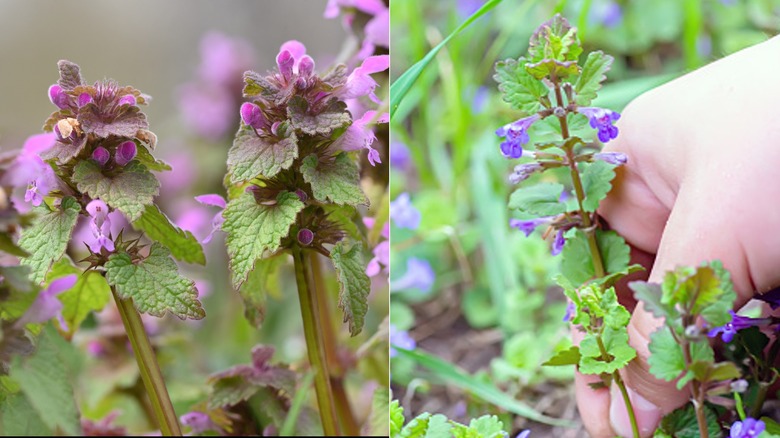Henbit And Other Look-Alike Weeds You'll Want To Remove From Your Yard Or Garden
Spring often brings a welcome burst of color to our gardens, but it can also introduce a wave of invasive weeds in your flower beds and lawns. Among these common invaders, a few weeds like henbit (Lamium amplexicaule), purple dead nettle, (Lamium purpureum), and ground ivy (Glechoma hederacea) can be particularly troublesome, especially because they all look alike. While they may seem harmless, these weeds will also choke out more desirable plants, so it's important to know how to recognize them and why you need to get rid of these weeds in your garden and yard.
Henbit is one of the more common weeds that pops up in early spring and fall. It can be recognized by its small, scalloped leaves that wrap around the stem and clusters of tiny purple flowers, which might seem inviting at first. However, this weed spreads quickly and can soon form thick patches that take over garden beds, crowding out other plants. Henbit belongs to the mint family, which explains its rapid spreading habit, and while it may provide some nectar for bees, ultimately, it is more of a nuisance for gardeners who are trying to keep their plots curated. Henbit can grow up to 15 inches tall, and its shallow roots make it easy to pull, but frequent check-ups will be needed to keep it from coming back.
Purple dead nettle and ground ivy are sneaky look-alikes
Another weed that's often mistaken for henbit is purple dead nettle. This plant is closely related and shares a similar appearance to henbit, with clusters of pinkish-purple flowers and jagged, heart-shaped leaves. However, purple dead nettle's leaves have a slightly fuzzier texture, and its stems are red in color. Like henbit, it tends to thrive in early spring, but blooms almost year-round, often creating a purple carpet effect in lawns and gardens. While it's not as aggressive as henbit, purple dead nettle still competes with desired plants for nutrients, light, and space. If you're looking for the least harmful ways to kill weeds in your lawn, purple dead nettle can be pulled by hand, but it may still require a post-emergent herbicide to keep it knocked down.
Finally, ground ivy — also known as creeping Charlie — is another weed that can cause trouble in lawns and gardens. Unlike henbit and purple dead nettle, ground ivy has more of a creeping growth habit, spreading horizontally across the ground rather than vertically. It has small, rounded leaves with scalloped edges and delicate blue or purple flowers that bloom in early spring. It also has a much stronger scent than the other two. Ground ivy spreads via stolons or horizontal runners, making it particularly hard to get rid of once it takes hold. It can be managed by hand pulling and digging; however selective broadleaf herbicides containing triclopyr may be necessary to kill it entirely.

